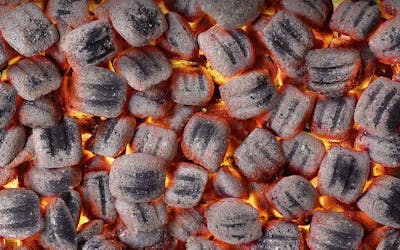Fire Configurations
Solid Fuel Configurations
There are several different ways to configure solid fuel. Each serves a different purpose and is better suited to different cooking styles. We’ve covered off several of the most commonly used below.
Bulls Eye
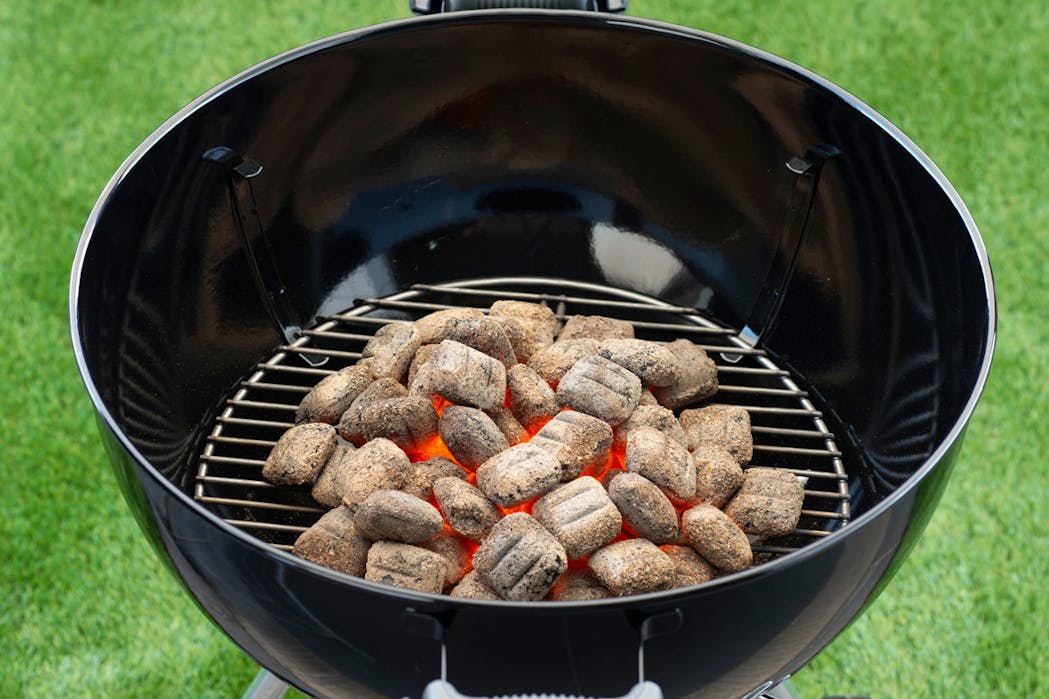
The bulls eye configuration is aptly named and a straight forward configuration to use. Prepared by creating a pyramid of fuel, this style doesn’t require you to shift your lit fuel at all. Providing a restricted direct zone cooking area, you can benefit from a large indirect cooking zone suited to smaller foods, such as bone-in chicken wings and drumsticks.
Two Zone Fire
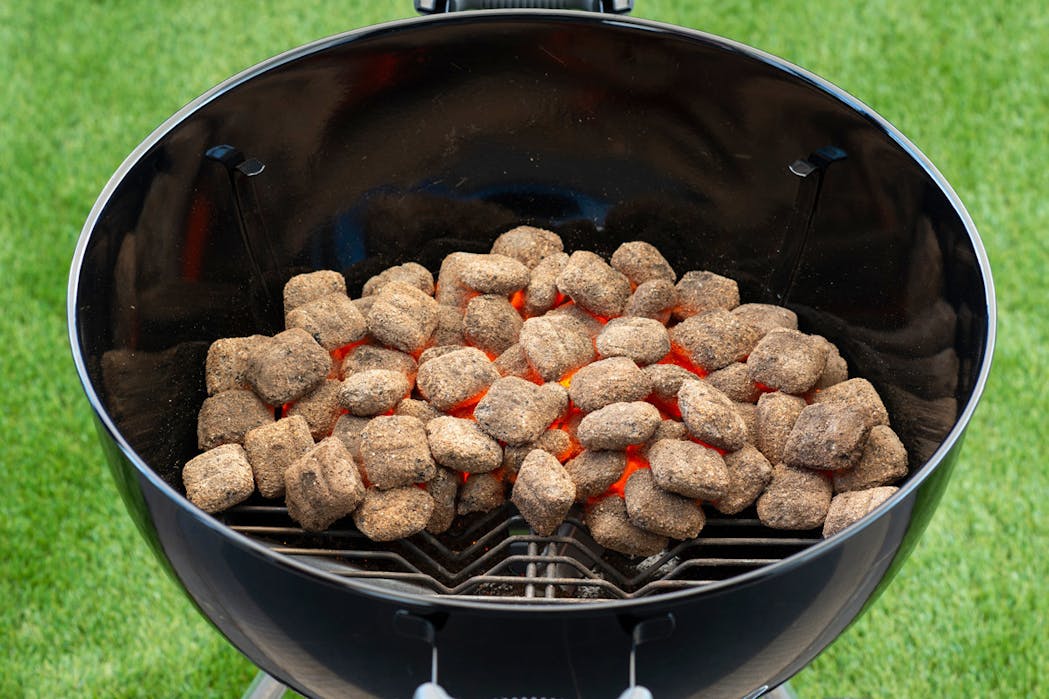
One of the most commonly used configurations when using a charcoal barbecue is the two zone fire. Brilliant in its simpleness, it provides the ability to easily cook over direct and indirect heat at the same time. Why is this important? Because it lets you easily control the rate at which your food cooks. You can perfectly sear steaks over the direct zone then move them over the indirect zone to finish cooking through.
Three Zone Fire
A three zone fire is very similar in nature to your regular two zone, with one point of difference. Rather than having half of your barbecue evenly covered in fuel, the fuel then slopes down across the barbecue. What you’ll end up with is on one side fuel two to three briquettes deep, near the centre one briquette deep and on the opposite side no fuel at all, providing you with a direct high, direct medium and indirect cooking zones all at once.
Three Zone Split Fire – Using Char-Baskets™
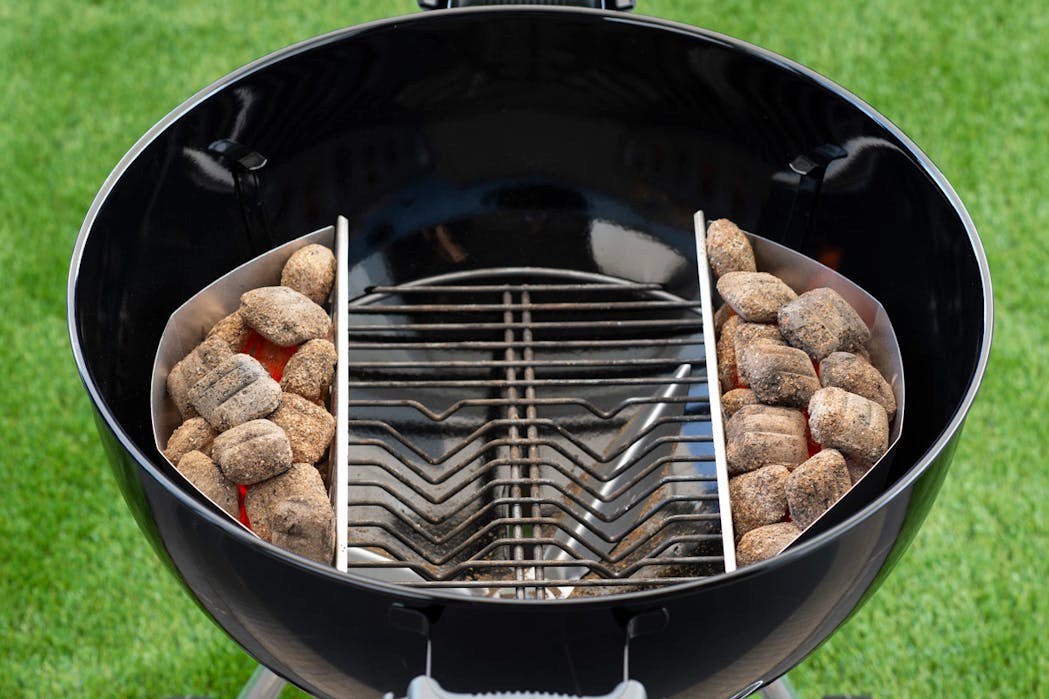
The three zone split fire is what we commonly use for roasting in Australia and New Zealand. For this method, we recommend using your barbecues Char-Baskets™ or Char-Rails™. The end result has an indirect cooking zone in between two lots of lit fuel, providing perfectly even heat either side of your food. This not only cooks your roast evenly, but also provides two separate direct cooking zones if you wish to cook quicker foods at the same time.
Snake Method
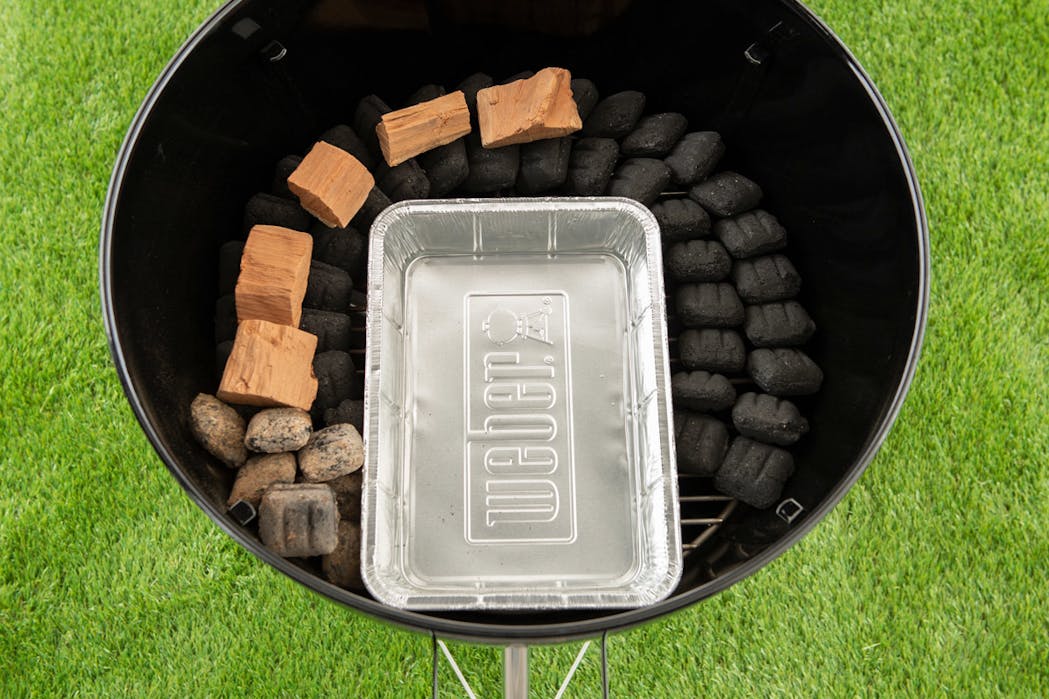
The ‘snake’ method is commonly used for obtaining very low cooking temperatures for long periods of time. Great for low and slow cooking, think beef short ribs, pork ribs or brisket! The ‘snake’ method consists of a series of unlit briquettes, 2 rows wide and placed at a 45 degree angle around half your barbecues circumference. For a 57cm barbecue, 10-12 briquettes are then lit off to one side, then once ashed over, piled over the front of the ‘snake’ to start the process. If desired, you can also place 3-4 smoking wood chunks at the start of your snake too! Remember to place a large drip pan filled with water in the middle of the barbecue as this helps to regulate the temperature, and also catches any drippings from your meat. Then place your meat above the drip pan, not directly over the lit fuel and you’re all set.
Note: Monitor your temperature and adjust the positon of your barbecues lid as necessary. If your temperature has nicely stabilised, rotate the lid so the air vent is opposite your lit fuel, drawing the smoke around your meat. If the temperature is a bit low, ensure the air vent is above your lit fuel, allowing maximum air flow.
